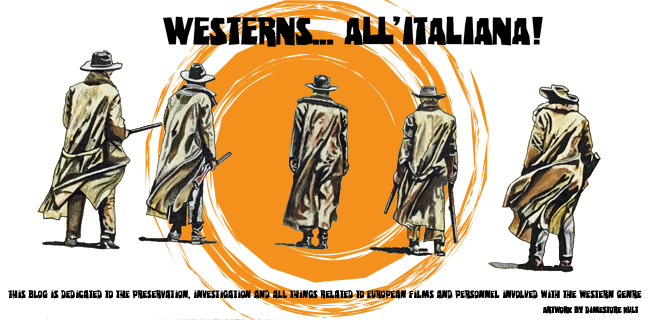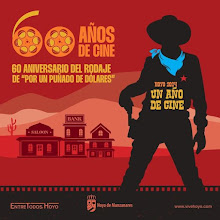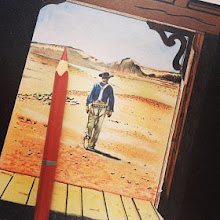By GAIL SCHONTZLER
September 24,2014
Long before American pop culture invaded Europe in the
form of blue jeans and jazz, movies and rock ‘n’ roll, Buffalo Bill Cody
conquered the Old World with his Wild West show.
Cody remains an “enduring icon” in Europe today, say two
professors of American studies from the University of Utrecht in the
Netherlands.
Montana State University history professor Robert Rydell
brought Rob Kroes and Jaap Verheul, “two of Europe’s leading authorities on
American history and culture,” to Bozeman this week to meet with graduate
students and give a public talk Wednesday on the topic of Buffalo Bill in
Europe.
Today there are Wild West theme parks from Spain to
Scandinavia, and one near Munich attracts a million visitors a year, Kroes and
Rydell wrote in their 2005 book “Buffalo Bill in Bologna.”
Germans in particular enjoy vacations where they dress up
and reenact life as American Indians, often idealized as people living closer
to nature. Disneyland Paris features a modern version of Buffalo Bill’s Wild
West Show – which, as Caroline Running Wolf described at a recent Pecha Kucha
lecture, creates an avenue for reverse colonization of Europe by Native Americans.
The original Wild West show, launched in 1883, was
already a hit in America when Mark Twain suggested Cody take it to Europe.
While most American exhibitions were dismissed as hand-me-downs of European
culture, the Wild West show was, Twain wrote, “purely and distinctively
American.”
Cody’s show toured Europe from 1887 to 1906, visiting
Britain, Italy, Spain, France, Belgium, Austria, Germany and the Vatican, where
the pope gave his blessing. Millions of Europeans saw the show as a living
depiction of the America they had only read about before.
Part of the attraction was that the show wasn’t put on by
actors but by real cowboys, sharpshooters and Indians. Cody brought 97 Indians,
180 horses, 18 bison, 10 elk and a couple of deer to the first shows in London.
The Wild West show, Kroes said, “told the story of
conquest of the American West, battles with Indians, and the heroism of it
all.”
Cody reinforced stereotypes about Indians, Rydell said,
but he also let them keep their own cultural traditions and gave them an
alternative to life on reservations.
The Prince of Wales, the future king of England, came to
see the show, as did his mother, Queen Victoria, in her first public appearance
since her husband’s death a quarter century before. One day the prince and the
kings of Denmark, Greece, Belgium and Saxony boarded the Deadwood Stage as
Buffalo Bill drove it around the arena and Indians staged a mock attack.
Daily Wild West shows depicted “civilization” conquering
the Indian “savages.” Yet equally popular with Europeans were the tipi
encampments put up by the show’s Indians, where visitors could meet exotic
Native Americans and heroic chiefs, Kroes said.
A poster from that era depicts Rosa Bonheur, the famous
French artist, ignoring the chance to paint Napoleon in favor of Cody – the
“new man of the West, looking virile and manly,” Rydell said. She loved horses
and was rumored to have had an affair with Cody. After his horse died, Cody
sent her its head as a gift.
Even in Cody’s day, some Europeans criticized Americans
for the treatment of Indians and for building a civilization on the gun and the
bullet. The violence both “disturbed and secretly attracted” Europeans, Verheul
said.
Cody’s popularity increased after his death, reaching its
peak in the 1950s, Verheul said. It was the era when TV Westerns like “Bonanza”
and “Gunsmoke” dominated American culture. Europeans watched the same TV shows,
the professors said.
In the 1950s, Buffalo Bill appeared especially in
children’s books as a hero to European children. Just like American kids, they
grew up playing cowboys and Indians.
In his talk, Rydell planned to show a color lithograph
from an Italian magazine of political satire that in 1906 depicted Cody riding
a giant bullfrog – a play on Italian slang that aimed its critique at corrupt
Italian politics.
The original bullfrog image today is in the Buffalo Bill
Center of the West museum in Cody, Wyoming – having once resided with the Earl
of Carnarvon, owner of Highclere Castel of “Downton Abbey” fame.
The visiting professors said they plan to visit the Cody
museum.











No comments:
Post a Comment